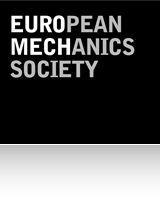643 – Advances in peridynamic material modeling
Chairperson:
Vito Diana
University of Genova
Department of Civil, Chemical and Environmental Engineering
Via Montallegro 1
16145 Genoa, Italy
Email: vito.diana@unige.it
Co-chairperson
Florin Bobaru
Department of Mechanical & Materials Engineering
University of Nebraska–Lincoln
US
Mirco Zaccariotto
Department of Industrial Engineering
University of Padova
Italy
Arman Shojaei
Institute of Material Systems Modeling
Helmholtz-Zentrum Hereon
Germany
Peridynamics is a non-local continuum theory that has shown promise in modeling the behavior of materials subjected to extreme deformation and complex material behaviors. Its intrincic non-local character makes peridynamics particularly well-suited for modeling modern problems in mechanics involving the spontaneous formation of cracks/damage since the governing equations remain equally valid at points or surfaces of discontinuity. In the last decade, peridynamic equations have also been extended to diffusion-based problems and have successfully been applied to model coupled phenomena involving different physics. This colloquium aims to provide a comprehensive overview of the recent advances in peridynamics, highlighting its potential to address fundamental challenges in materials science and engineering and to foster collaboration and exchange of ideas among researchers in this field.
